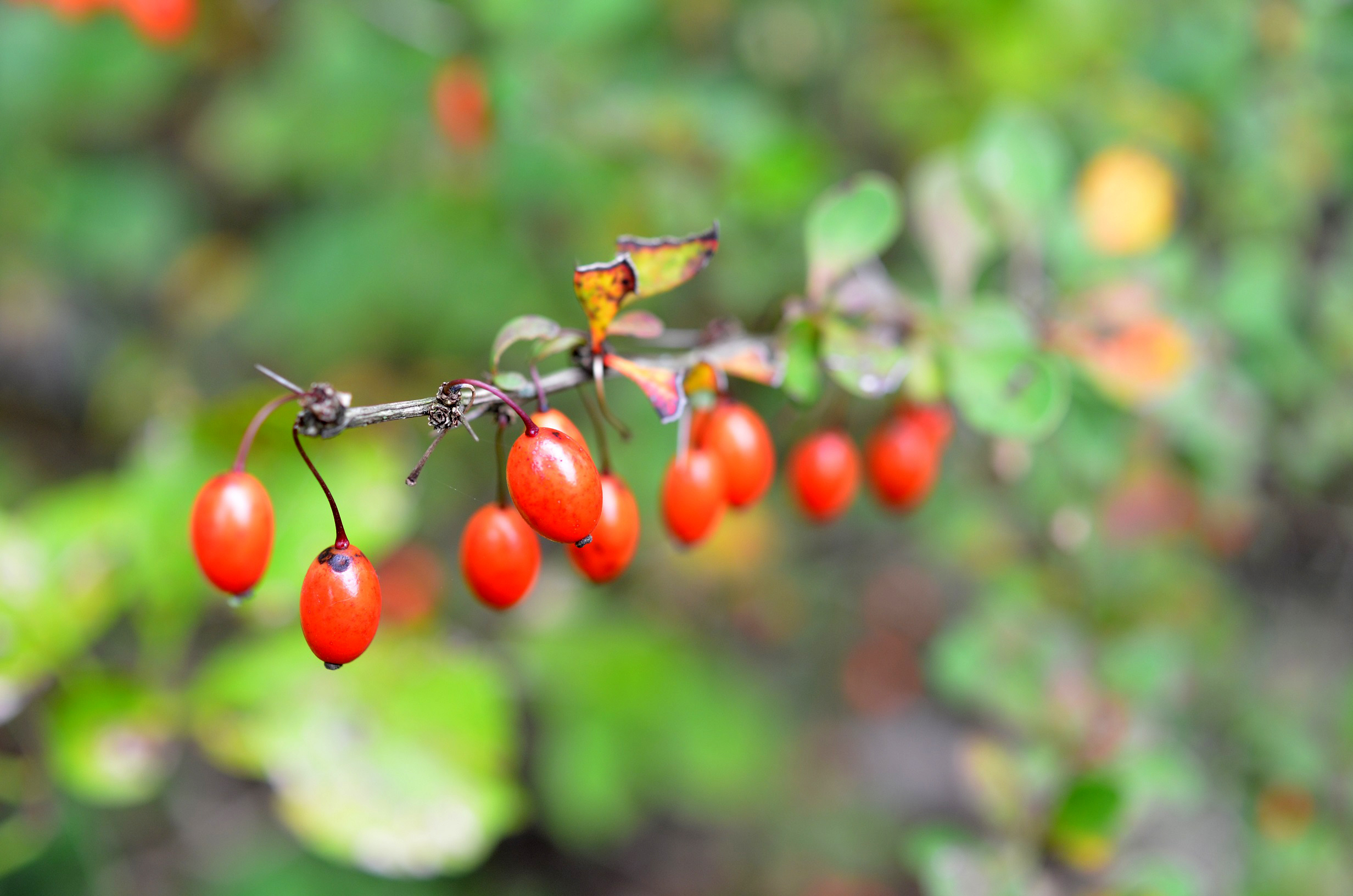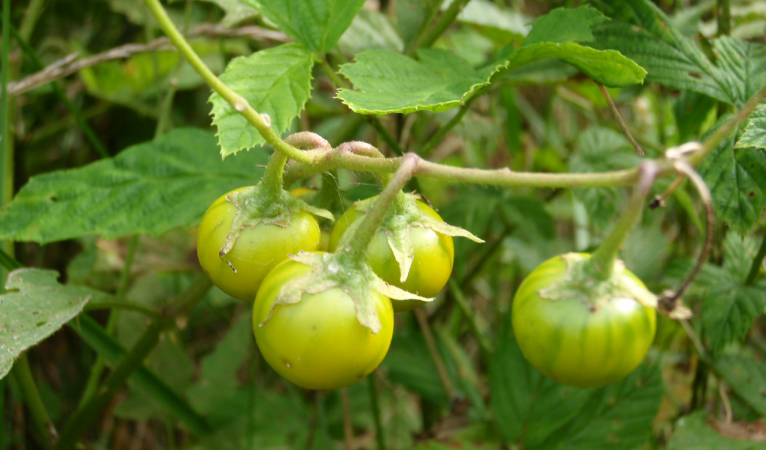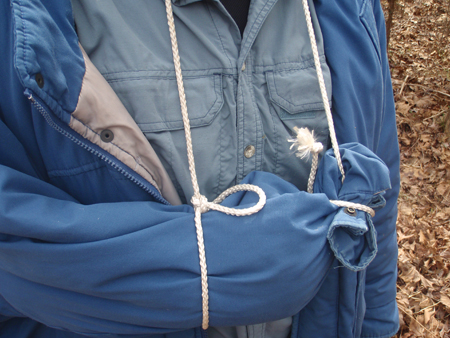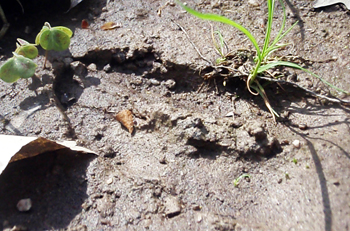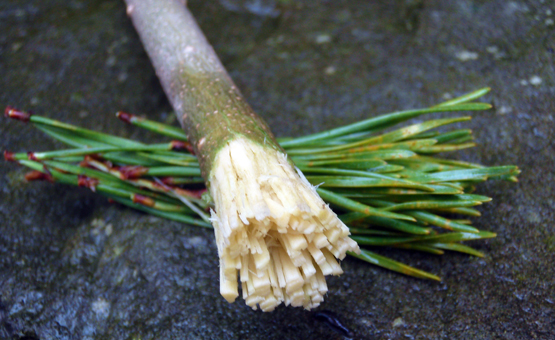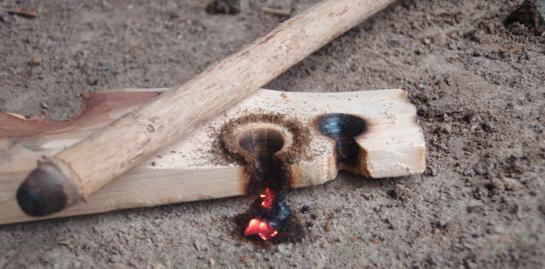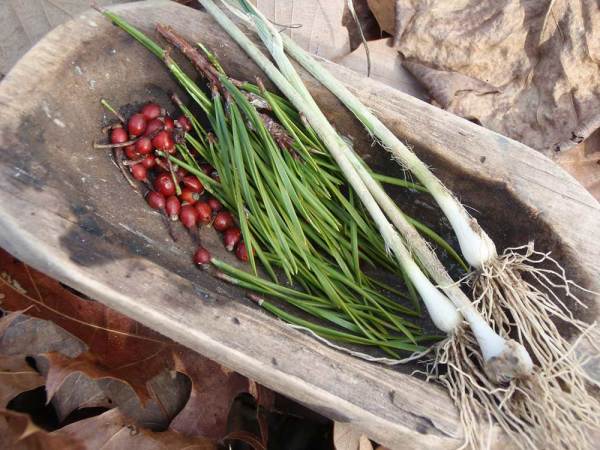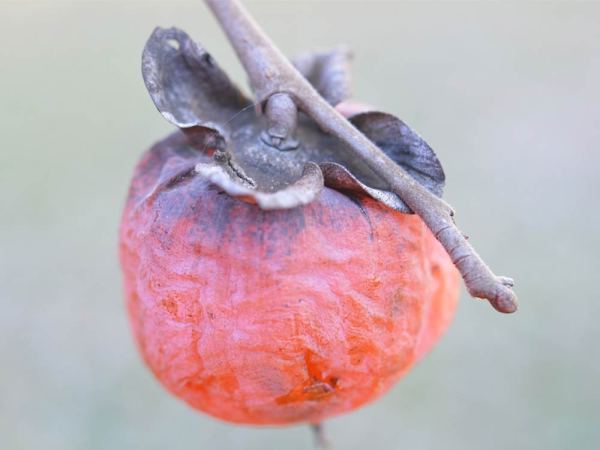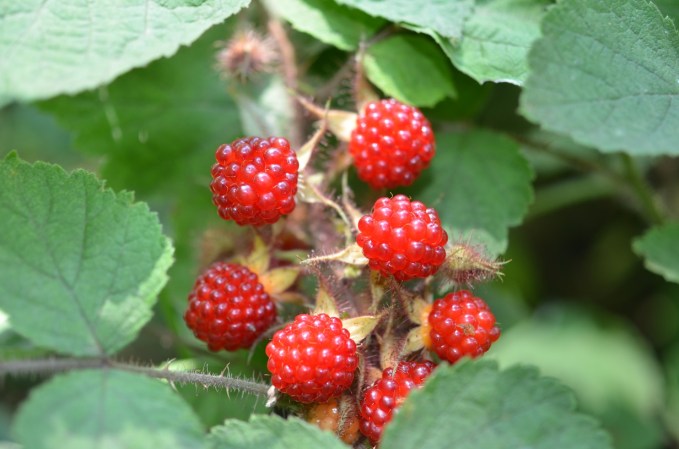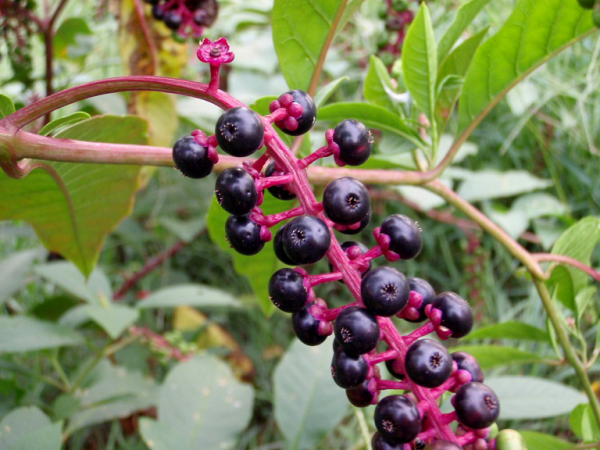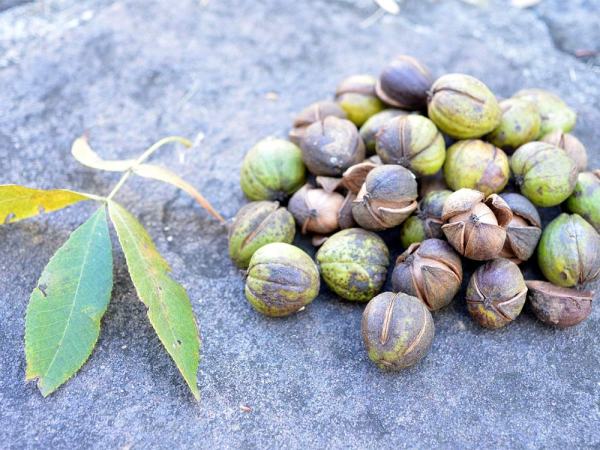It’s hard to miss all the red berries of fall, even against the colorful foliage of the season. But not all of the attractive ruby-colored fruit is safe for us to eat. The birds might take advantage of them all, but remember that birds have very different digestive tracts than humans, and can happily eat berries that would leave us writhing in pain and vomiting. Many facets of survival are dependent upon attention to detail, and none more so than botany. Study these details and you won’t go wrong.
Barberry
Barberry—Edible
The first thing you’ll notice about barberry is that the berries dangle like little shiny red ornaments. The bush has thorns, and the small leaves grow odd whorls. The two native species of barberry have thorns in sets of three, while the invasive Asian species has single thorns. Smash this berry open, and you’ll find a reddish pulp and typically 2 dark brown seeds that have an elongated, tear shape. Seeds can be eaten along with the berry, or spit out. Barberry can be eaten in small amounts, or steeped as a tea. Their flavor tends to be bitter.
Autumn Olive
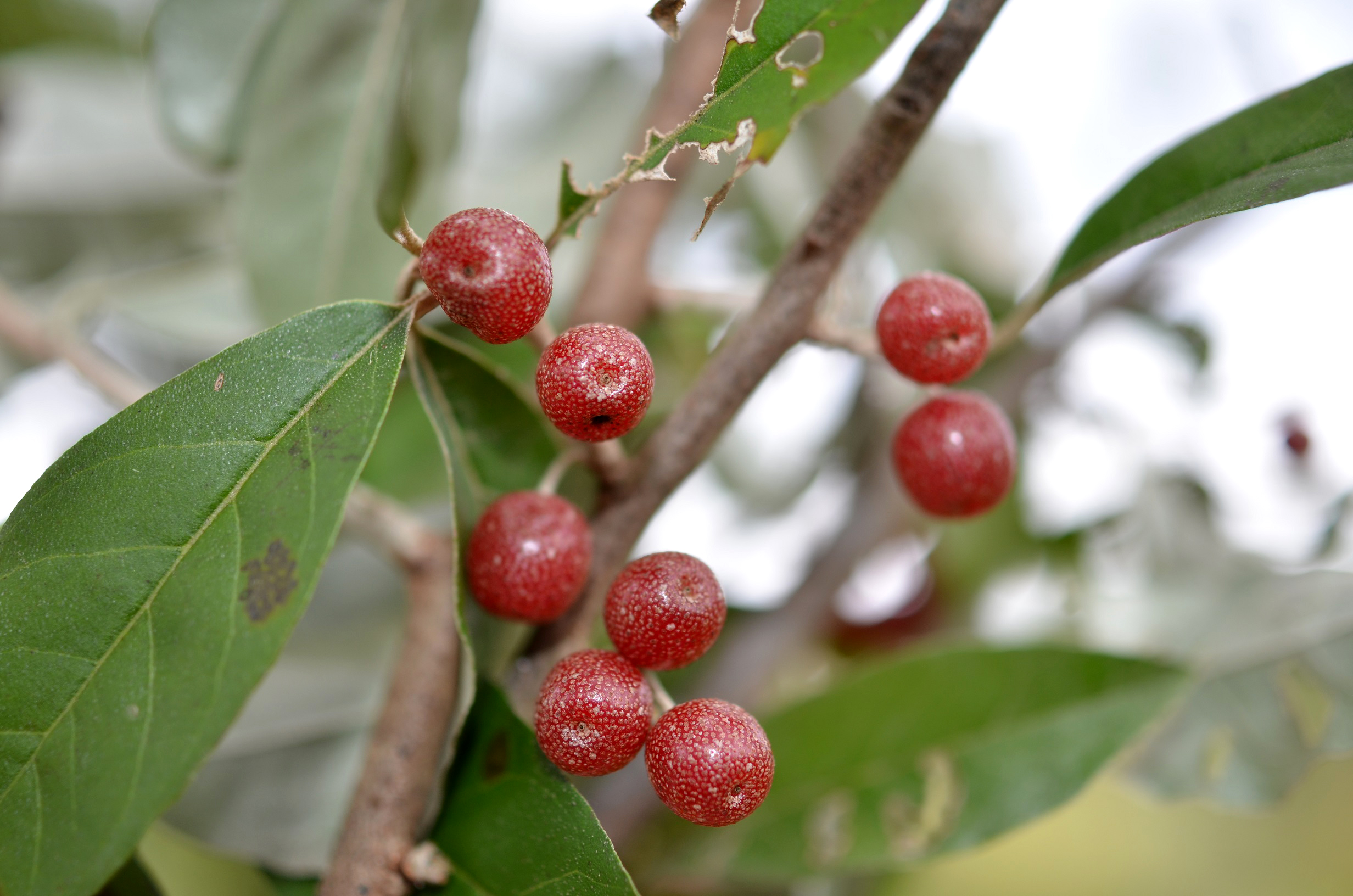
Autumn Olive—Edible
This invasive species is despised by many ranchers, as it takes over quickly, reducing the habitat for native species and forage crops. These woody bushes grow up to 30 feet tall, with simple alternate leaves that have an interesting silver sheen on the underside. The autumn olive’s fruits are round, with a dimple on each end, and resemble the shape of a tiny apple. The red skin is covered with freckles that range in color from tan to bronze to brown. Pop a berry open and you’ll find a juicy red pulp and one greenish-yellow seed. The seed is hard and resembles a long, thin lemon seed. These berries can be eaten in quantity, and they make a fine jam and a tasty pink-colored wine. The berry flavor ranges from sweet yet tannic, to just plain sour and tannic. Seeds can be eaten along with the berry, and are high in protein.
Rosehips
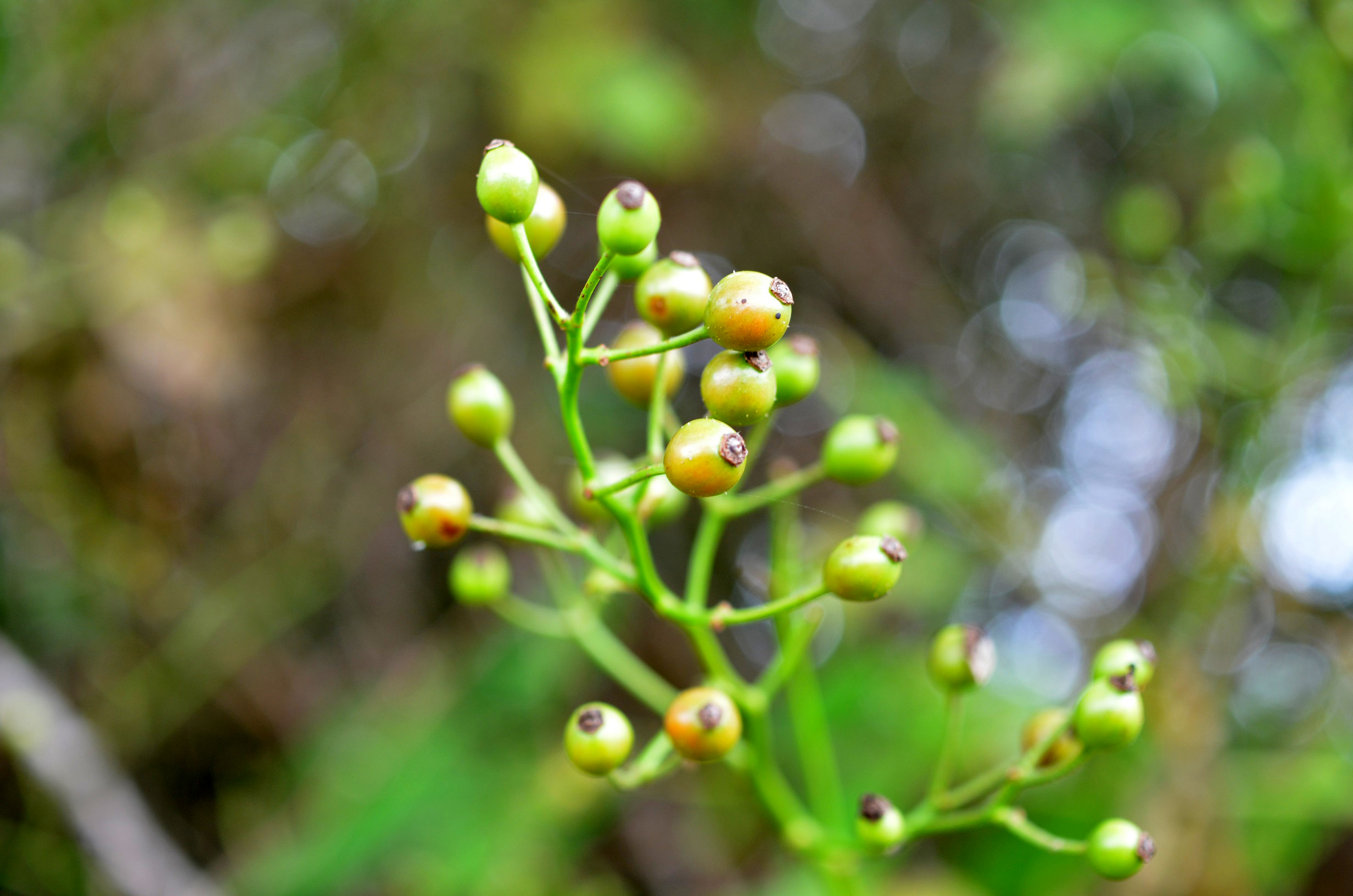
Rose Hips—Edible
Rose hips are a delicious treat when they are fully ripe. Rose bushes have sharp curved thorns, and pinnately compound leaves. Rose hips are usually at their peak when the color is deep red and the hip has become soft. Rose hips have a gray spot on the end of each fruit. The berry innards are a sticky reddish paste. The seeds are numerous, pale yellow in color, and shaped like little garlic cloves. Rose hips can be eaten out of hand, made into jam, steeped as tea, or used as a wine component. Seeds can be eaten along with the berry, or spit out.
Dogwood
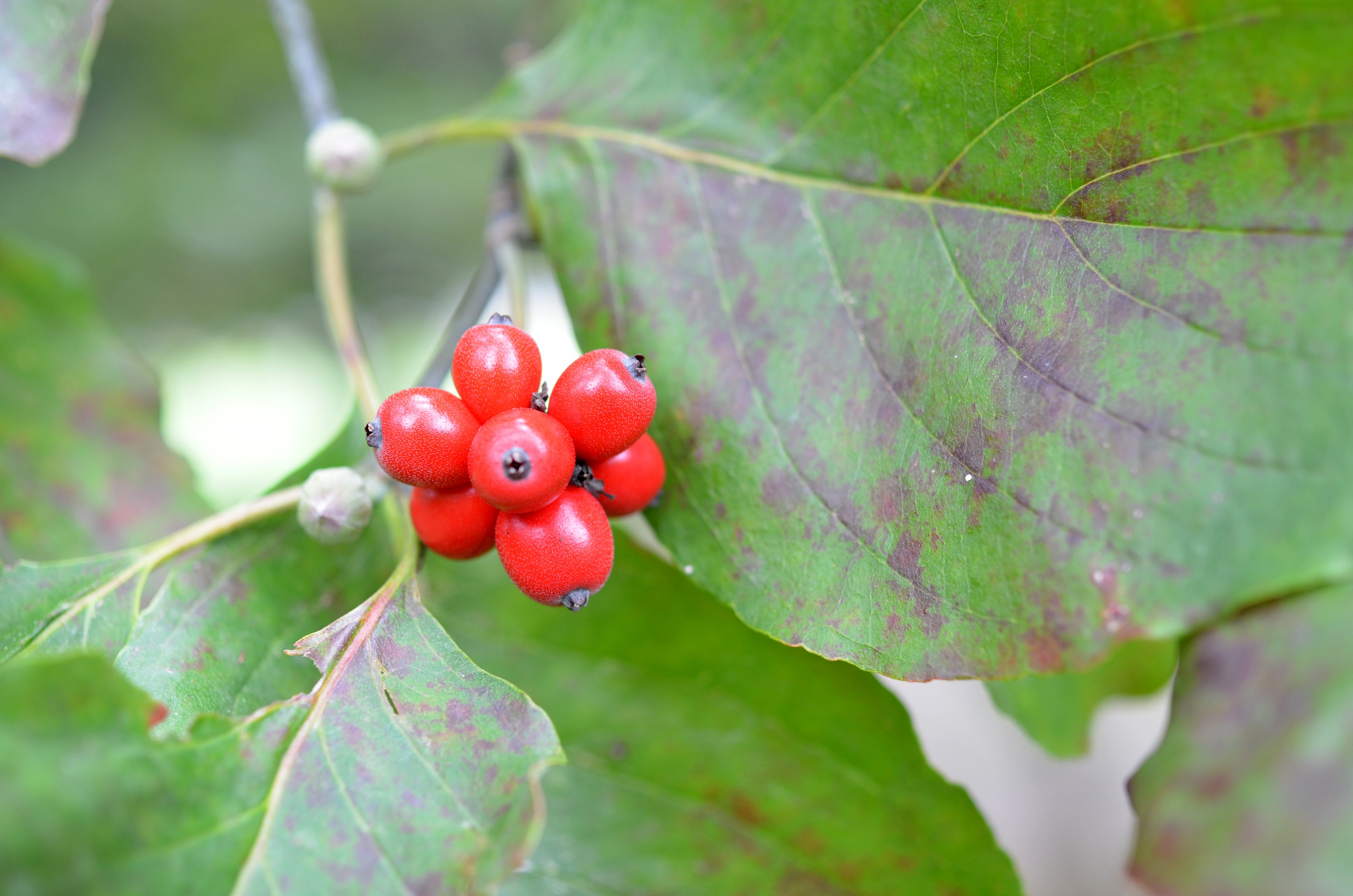
Dogwood—Toxic
Dogwood trees are small understory trees found in shady areas and forests. Their red berries have a noticeable black spot on the end of the berry. The innards are yellowish, with one large pale seed or several pale yellow seeds, depending on the species. Do not eat dogwood berries. Even though they are a food for migratory birds, their numerous toxins make them harmful to humans.
Holly
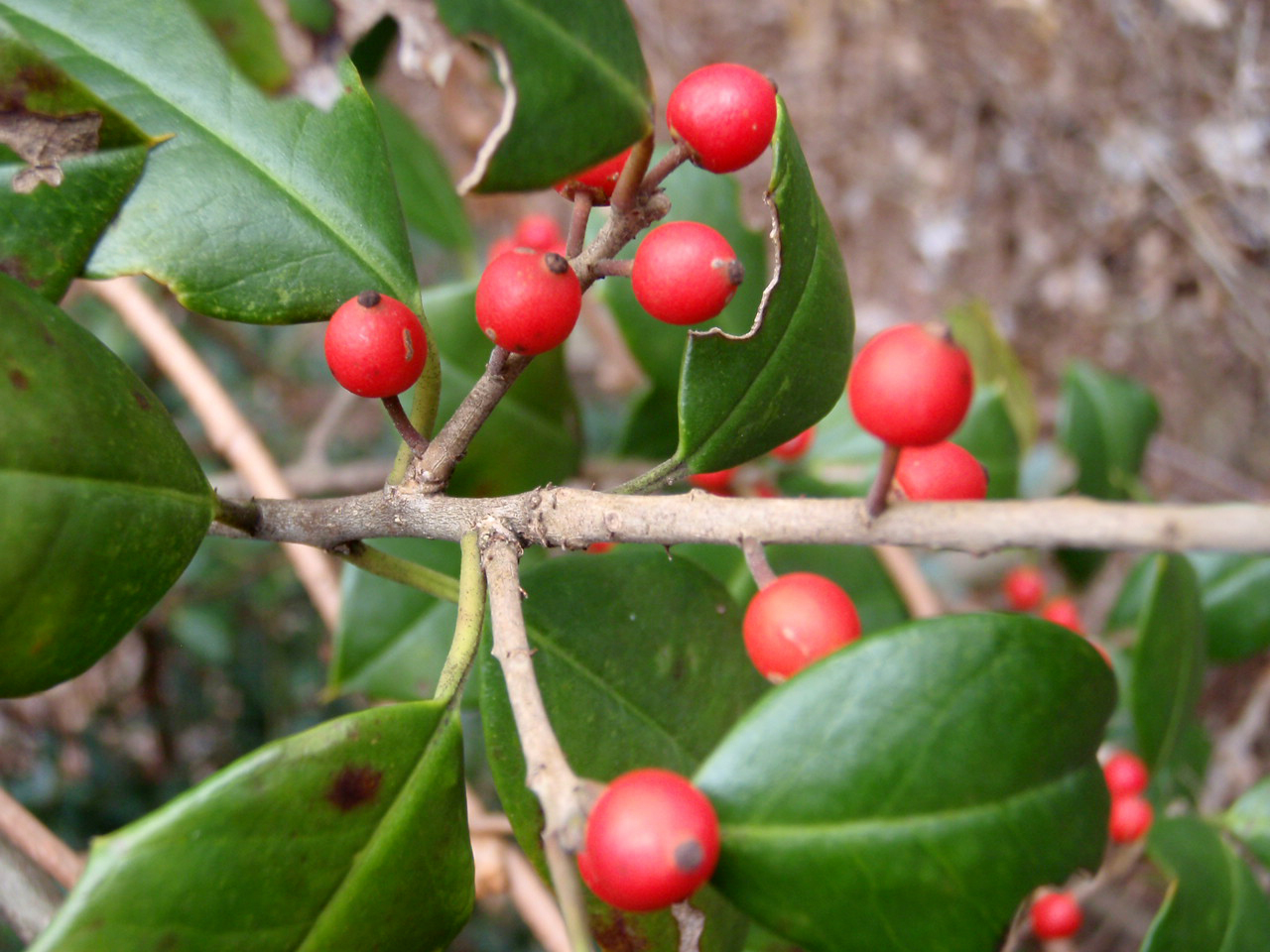
Holly—Toxic
This medium-size tree has shiny evergreen leaves that are edged with sharp spines. The red berries have a single large seed and a yellowish pulp. Like the dogwood, they are a favorite of migratory birds, but contain numerous toxins that make them harmful to humans.
What are your favorite fall berries, and what do you use them for? Let us know in the comments.
